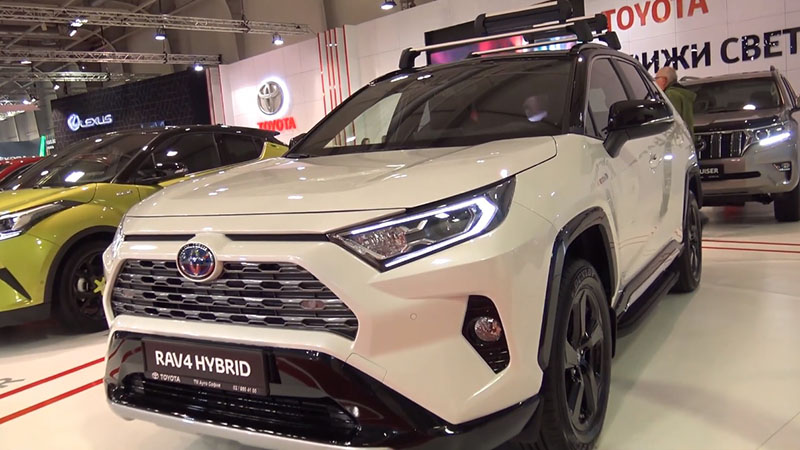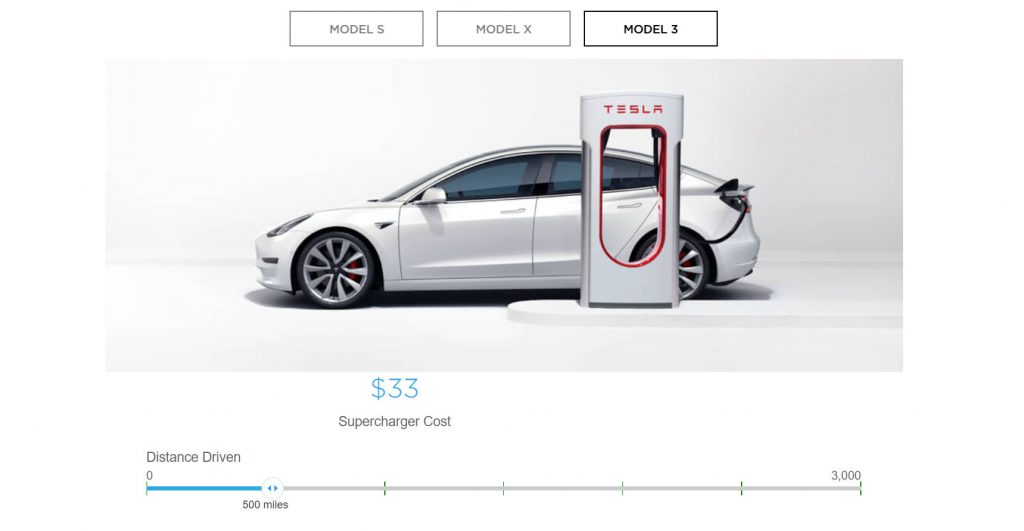Tesla has jacked up prices for its Superchargers to the point that its taking heavy toll on fuel economy. Its so bad now, driving a gas powered compact SUV will save you money compared to all Tesla models, including the smallest Model 3.

About RAV4
You may not know this, but RAV4 is considered the first crossover SUV to set foot on world stage. Although the AMC Eagle from 1979 is retroactively crowned to be the first crossover, but it was prior to the usage of terms SUV or crossover. RAV4 is the reason for today’s crossover craze. The Japanese automaker Toyota first introduced this vehicle in Japan and Europe in 1994 and later in North America in early 1996.
RAV4 is an acronym for ‘Recreational Activity Vehicle: four wheel drive’, and it was designed for buyers wanting a vehicle that had most of the qualities of SUVs, such as higher cargo space, better driving visibility, four wheel drive system, along with the handling and fuel economy of a compact car. Despite its name, not all RAV4s are equipped with 4WD system, its an optional feature.
The hybrid system was first introduced in fourth generation of RAV4 and it made its debut in November 2012 Los Angeles Auto Show. One major change was the RAV4 no longer used the V6 engine from the previous generation, all choices were inline four-cylinder engines, and the V6 has never come back to this day. Its hybrid system consisted of combination of 2.5-liter Atkinson cycle gasoline engine with a powerful electric motor and a 204 cell nickel–metal hydride battery pack under the back seats. Its 4WD version was equipped with another, 50 kilowatt high-voltage electric motor, which enhanced its traction and enabled 1,750 lb towing capacity. Toyota’s hybrid system in its modern vehicles have come a long way since then and now offers around 40 mpg fuel economy.
Tesla Superchargers and rising prices
Tesla Supercharger is a 480-volt DC fast-charging station built by American automaker Tesla for its fleet of all electric vehicles, it was first introduced in early 2012. Back then supercharging your car was totally free, but as the network expanded Tesla started charging its new customers. Within last few years we have seen series of price hikes, latest of which happened earlier in 2019 when Tesla owners saw as much as 100 percent increase in cost. Its current network consists of 1,636 stations with 14,497 Supercharger stalls in North America.
Calculating cost per mile
Toyota RAV4 cost per mile
Lets first calculate cost per mile for 2020 Toyota RAV4 hybrid. According to official Toyota website, RAV4 LE hybrid version offers 38 mpg for city, 41 mpg for highway and 40 mpg combined. To make this comparison fair, RAV4’s combined mileage will be used, since Tesla advertises its combined mileage.
According to AAA, national average price of gasoline is $2.577 at the time of writing of this article. Dividing this figure by 40 (mpg) gives us cost per mile which is $0.064425, or simply 6.44 cents.
Tesla cost per mile
Calculating cost per mile for EVs is a lot more tricky, but since they have already done this for us, we will simply use Tesla’s own figures to make this comparison. On tesla.com/supercharger you can find a beautiful cost calculator where you select distance and it will show you supercharger cost.

Selecting 500 miles in Tesla’s calculator gives us $39 cost for Model S, $44 for Model X and $33 for Model 3. Simply dividing the cost by distance gives us cost per mile for each vehicle which turns out to be 7.8 cents for Model S, 8.8 cents for Model X and 6.6 cents for Model 3.
The Comparison
Cost per mile
According to the results of above calculations, Tesla Model X will cost 37% more in fuel as compared to RAV4 LE Hybrid. Model S has 21% higher fuel cost and Model 3 costs 2.5% more.

Miles per gallon
Since we have cost per mile for each vehicle, we can easily convert them to miles per gallon equivalent for Tesla cars.

Charging at home
It is true that you can save a lot of money by charging your Tesla at home. But charging directly from your wall socket is almost useless as it takes a Model 3 about 12 hours to get 25 miles of range. You can buy a Level 2 charger, but its still very slow as compared to a Supercharger. It can easily take 8 hours or more to fully charge a Model 3 from a Level 2 charger, depending on the quality of charger.
The problem of rising charging cost needs to be rectified, otherwise it could seriously hamper the adoption of electric vehicles.









